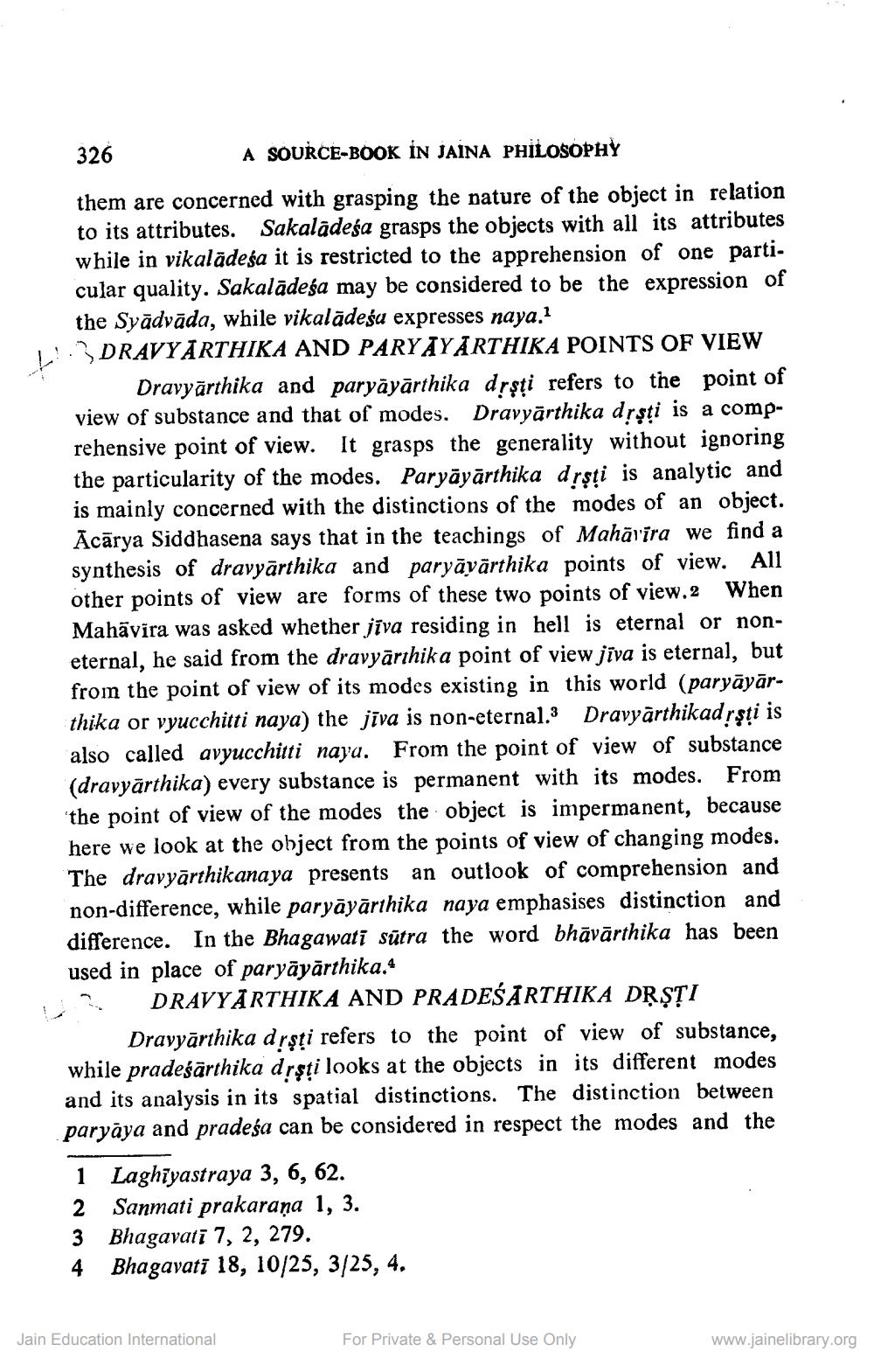________________
326
A SOURCE-BOOK ÎN JAINA PHILOSOPHY
them are concerned with grasping the nature of the object in relation to its attributes. Sakalādesa grasps the objects with all its attributes while in vikalādesa it is restricted to the apprehension of one parti. cular quality. Sakalādesa may be considered to be the expression of
the Syādvāda, while vikalādesu expresses naya.? 2.3 DRAVYARTHIKA AND PARYAYARTHIKA POINTS OF VIEW
Dravyārthika and paryāyārthika drsti refers to the point of view of substance and that of modes. Dravyārthika drsti is a comprehensive point of view. It grasps the generality without ignoring the particularity of the modes. Paryāyārthika drsti is analytic and is mainly concerned with the distinctions of the modes of an object. Ācārya Siddhasena says that in the teachings of Mahālira we find a synthesis of dravyārthika and paryāyārthika points of view. All other points of view are forms of these two points of view.2 When Mahāvīra was asked whether jīva residing in hell is eternal or noneternal, he said from the dravyārıhika point of view jiva is eternal, but from the point of view of its modes existing in this world (paryāyārthika or vyucchitti naya) the jīva is non-eternal.3 Dravyarthikad rşti is also called avyucchitti naya. From the point of view of substance (dravyārthika) every substance is permanent with its modes. From 'the point of view of the modes the object is impermanent, because here we look at the object from the points of view of changing modes. The dravyārthikanaya presents an outlook of comprehension and non-difference, while paryāyārthika naya emphasises distinction and difference. In the Bhagawati sūtra the word bhāvārthika has been used in place of paryāyārthika.
DRAVYĀRTHIKA AND PRADEŚĀRTHIKA DRȘTI
Drayyārthika drşti refers to the point of view of substance, while pradeśārthika drsti looks at the objects in its different modes and its analysis in its spatial distinctions. The distinction between paryāya and pradeśa can be considered in respect the modes and the i Laghīyastraya 3, 6, 62. 2 Sanmati prakarana 1, 3. 3 Bhagavati 7, 2, 279. 4 Bhagavatī 18, 10/25, 3/25, 4.
Jain Education International
For Private & Personal Use Only
www.jainelibrary.org




